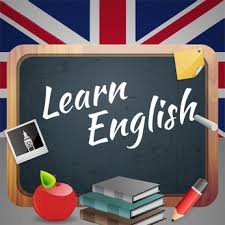Latihan Reading: The Healing Power of Maggots
The Healing Power of
Maggots
The
healing power of maggots is not new. Human beings have discovered it several
times. The Maya are said to have used maggots for therapeutic purposes a
thousand years ago. As early as the sixteenth century, European doctors noticed
that soldiers with maggot-infested wounds healed well. More recently, doctors
have realized that maggots can be cheaper and more effective than drugs in some
respects, and these squirming larvae have, at times, enjoyed a quiet medical
renaissance. The problem may have more to do with the weak stomachs of those
using them than with good science. The modern heydey of maggot therapy began
during World War I, when an American doctor named William Baer was shocked to
notice that two soldiers who had lain on a battlefield for a week while their
abdominal wounds became infested with thousands of maggots, had recovered
better than wounded men treated in the military hospital. After the war, Baer
proved to the medical establishment that maggots could cure some of the
toughest infections.
In the 1930s hundreds of hospitals used maggot therapy. Maggot therapy requires the right kind of larvae. Only the maggots of blowflies (a family that includes common bluebottles and greenbottles) will do the job; they devour dead tissue, whether in an open wound or in a corpse. Some other maggots, on the other hand, such as those of the screw-worm eat live tissue.
They
must be avoided. When blowfly eggs hatch in a patient’s wound, the maggots eat
the dead flesh where gangrene-causing bacteria thrive. They also excrete
compounds that are lethal to bacteria they don’t happen to swallow. Meanwhile,
they ignore live flesh, and in fact, give it a gentle growth-stimulating
massage simply by crawling over it. When they metamorphose into flies, they
leave without a trace – although in the process, they might upset the hospital
staff as they squirm around in a live patient. When sulfa drugs, the first
antibiotics, emerged around the time of World War II, maggot therapy quickly
faded into obscurity.
1. Why did the author write the
passage?
(a) because of the resistance to using the benefits of maggots
(b) to demonstrate the important contribution of William Baer
(c) to outline the healing power of maggots
(d) to explain treatment used before the first antibiotics
(a) because of the resistance to using the benefits of maggots
(b) to demonstrate the important contribution of William Baer
(c) to outline the healing power of maggots
(d) to explain treatment used before the first antibiotics
2. The word “renaissance” in line 6
is closest in meaning to
(a) revival
(b) resistance
(c) support
(d) condemnation
(a) revival
(b) resistance
(c) support
(d) condemnation
3. According to the passage,
William Bayer was shocked because
(a) two soldiers had lain on the battlefield for a week
(b) the medical establishment refused to accept his findings
(c) the soldiers abdominal wounds had become infested with maggots
(d) the soldiers had recovered better than those in a military hospital
(a) two soldiers had lain on the battlefield for a week
(b) the medical establishment refused to accept his findings
(c) the soldiers abdominal wounds had become infested with maggots
(d) the soldiers had recovered better than those in a military hospital
4. Which of the following is true,
according to the passage?
(a) sulfa drugs have been developed from maggots
(b) maggots only eat dead tissue
(c) bluebottles and greenbottles produce maggots
(d) blowfly maggots only eat dead tissue
(a) sulfa drugs have been developed from maggots
(b) maggots only eat dead tissue
(c) bluebottles and greenbottles produce maggots
(d) blowfly maggots only eat dead tissue
5. The word “devour” in line 16 is
closest in meaning to
(a) chew
(b) clean
(c) change
(d) consume
(a) chew
(b) clean
(c) change
(d) consume
6. The word “thrive” in line 19 is
closest in meaning to
(a) prosper
(b) eat
(c) move
(d) grow
(a) prosper
(b) eat
(c) move
(d) grow
7. The word “metamorphose” in line
22 is closest in meaning to
(a) disappear
(b) grow
(c) change
(d) move
(a) disappear
(b) grow
(c) change
(d) move
8. The word “they” in line 23
refers to
(a) flies
(b) maggots
(c) gangrene-causing bacteria
(d) live patients
(a) flies
(b) maggots
(c) gangrene-causing bacteria
(d) live patients
9. All of the following are true
EXCEPT
(a) maggots come from eggs
(b) maggots eat bacteria
(c) maggots are larvae
(d) William Bayer discovered a new type of maggot
(a) maggots come from eggs
(b) maggots eat bacteria
(c) maggots are larvae
(d) William Bayer discovered a new type of maggot
10. What can be inferred from the
passage about maggots?
(a) modern science might be able to develop new drugs from maggots that would fight infection
(b) maggot therapy would have been more popular if antibiotics had not been discovered
(c) William Baer later changed his mind about the value of using maggot therapy
(d) sulfa drugs were developed from maggots
(a) modern science might be able to develop new drugs from maggots that would fight infection
(b) maggot therapy would have been more popular if antibiotics had not been discovered
(c) William Baer later changed his mind about the value of using maggot therapy
(d) sulfa drugs were developed from maggots
Kunci:
1.c
2.a 3.d 4.d 5.d 6.d 7.c 8.b 9.a 10.b







9. D betul nya
BalasHapus